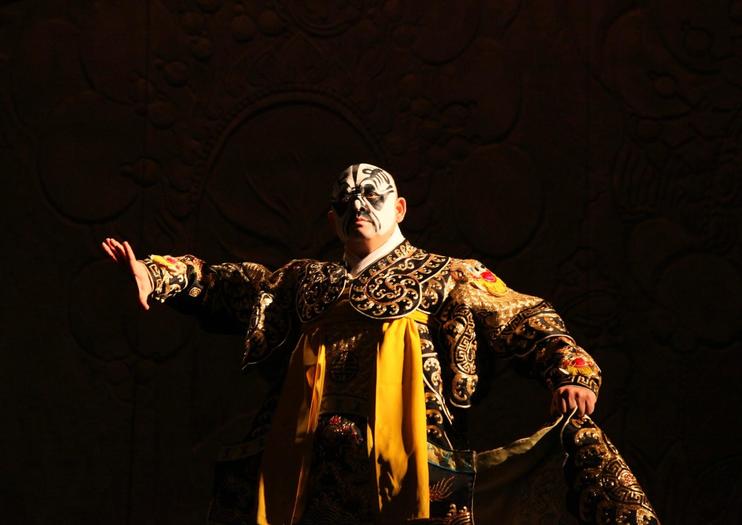

The paintings are representations of the characters' roles. The exact origin of facial painting is unknown, but its artistic value cannot be denied. The orchestral instruments include tradition Chinese instruments like the Erhu, Huqin, Yueqin, Sheng (reed pipe), and Pipa (lute). These instruments direct the entire band with their rhythm. One person usually plays the castanets and drums simultaneously.


The percussion instruments used most commonly include castanets, drums, bells, and cymbals. The former frequently accompanies peaceful scenes while the latter provides the right atmosphere for battles. The Peking Opera band mainly consists of an orchestra and percussion band. Only the very top actors and musicians can ever perform in a big time show. The rules for Beijing Opera have been standardized and must be followed strictly. It is also a visual art from that integrates music, actor 's performances, literature, aria, and face-painting. The costumes were a garish collection of sharply contrasting colors to stand out on the dim stage that was illuminated only by oil lamps. Since the orchestra played loudly, the performers developed a piercing style of song that could be heard by everyone. In ancient times, Beijing Opera was performed mostly on stage in the open air, teahouses, or temple courtyards. The leading Character of "Royal Concubine Yang of the Tang Dynasty" The famous heroine Mu Guiying in traditional Beijing opera

It was partly this process of taking the cream of the crop of musical styles that contributed to Peking Opera 's success. Over time, various music and arias from other musical art forms were absorbed. The dialogue used for the opera is an archaic dialect that also has roots from those regions. Although it is called Peking Opera, its main melodies primarily originated from Xipi, Anhui and Erhuang, Hubei. Beijing Opera underwent fast development during the reign of Emperor Qianlong and the notorious Empress Dowager Cixi and eventually became more accessible to the common people. It is believed that Beijing Opera gradually came into being after 1790 when the four famous Anhui opera troupes came to Beijing. Nowadays, appreciting an authentic Beijing Opera Show in famous Liyuan Theater is a must-do when you are traveling in Beijing. Full of Chinese cultural traditions and tidbits, the opera presents the audience with touching stories, beautiful paintings, exquisite costumes, graceful gestures and martial arts as well as combining stylized action, singing, dialogue, acrobatic fighting and dancing to explain ancient Chinese myths and historical stories or depict various different characters, good or bad. With its fascinating and artistic music, singing and costumes, the Beijing Opera (Peking opera) is China's national opera.


 0 kommentar(er)
0 kommentar(er)
